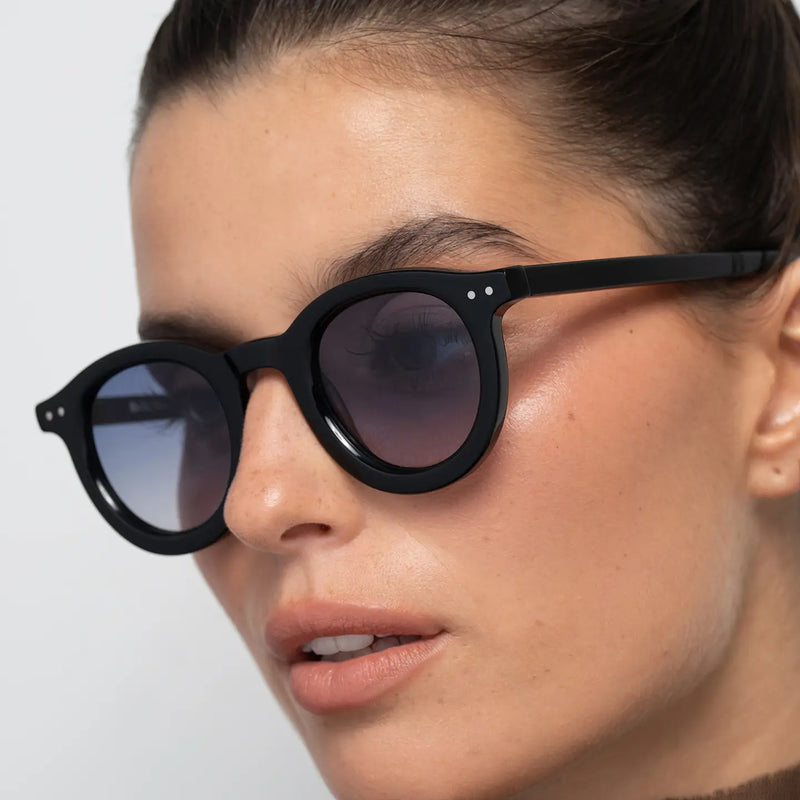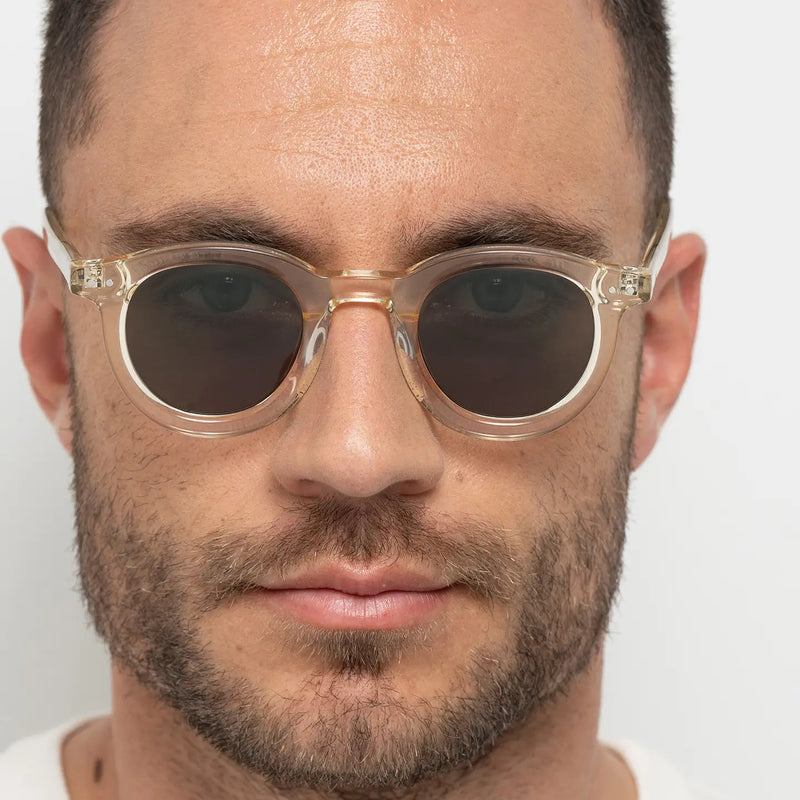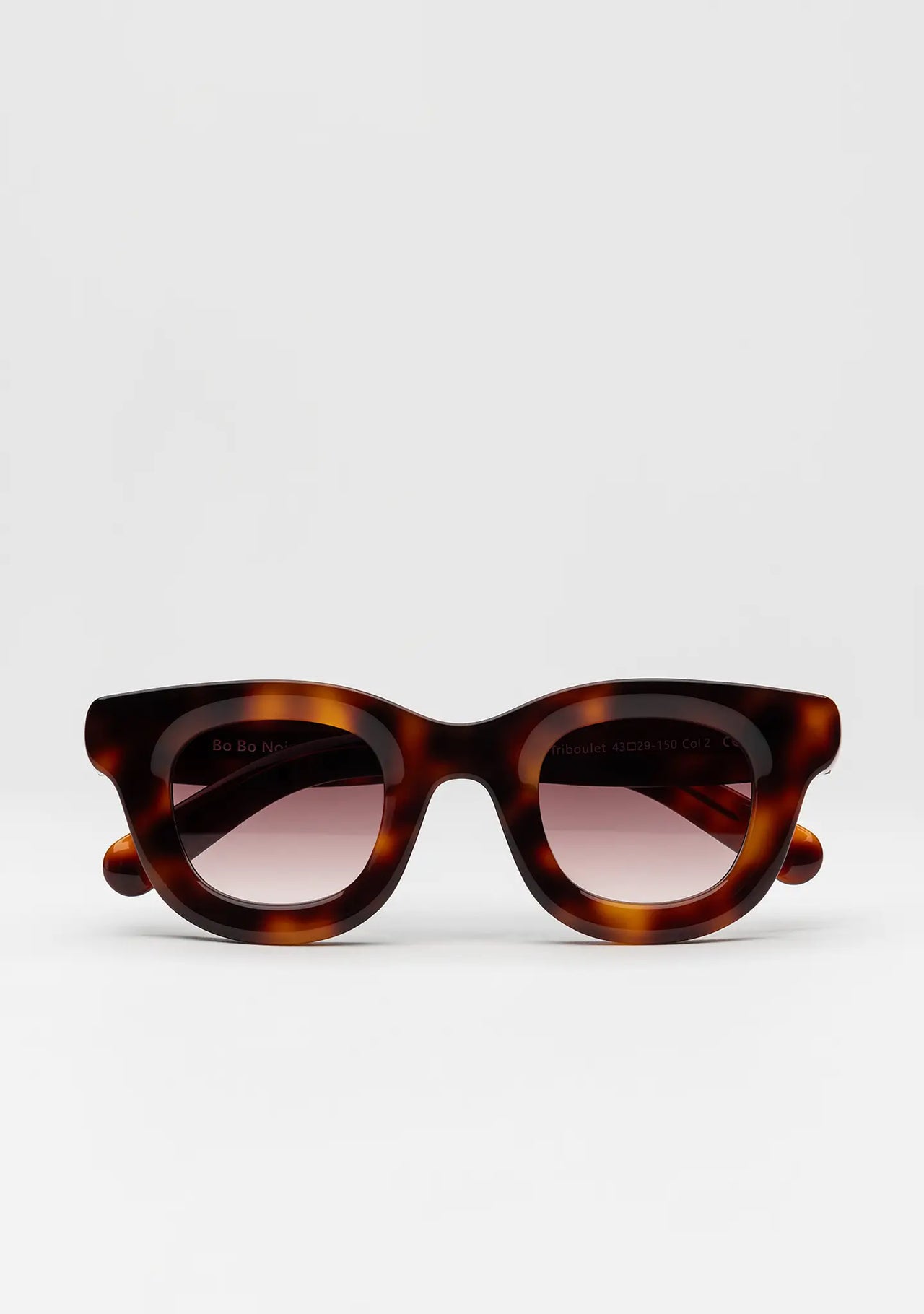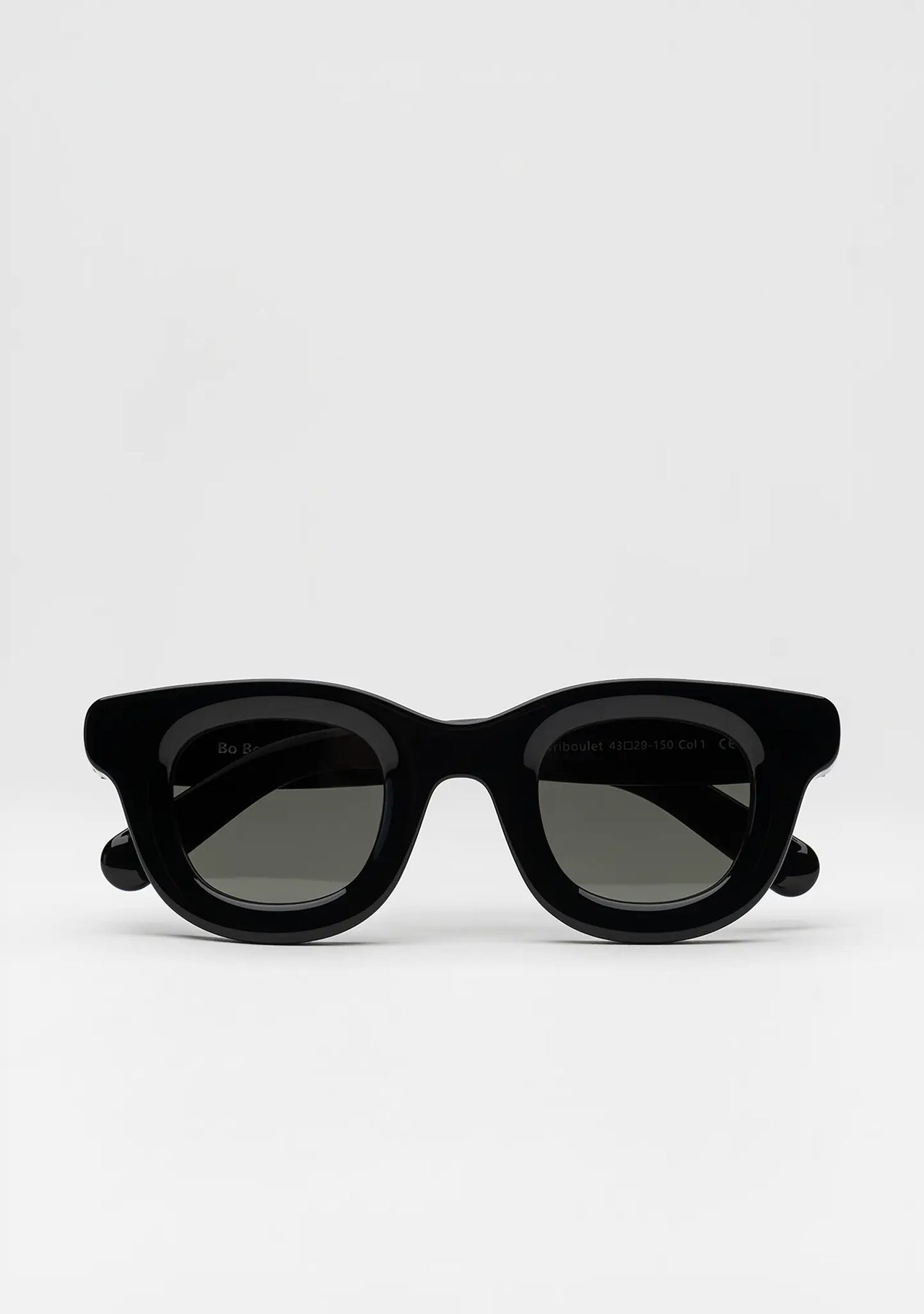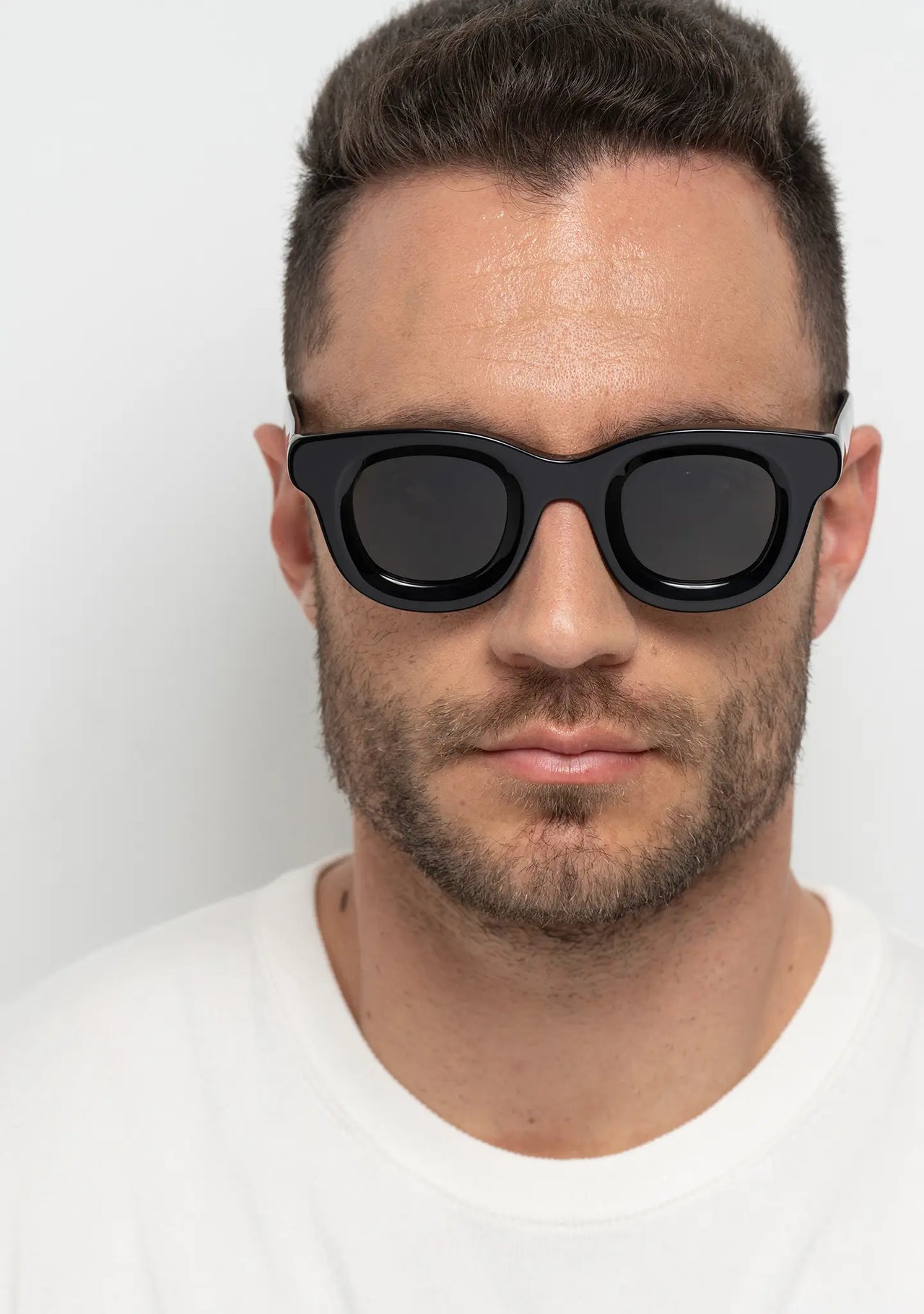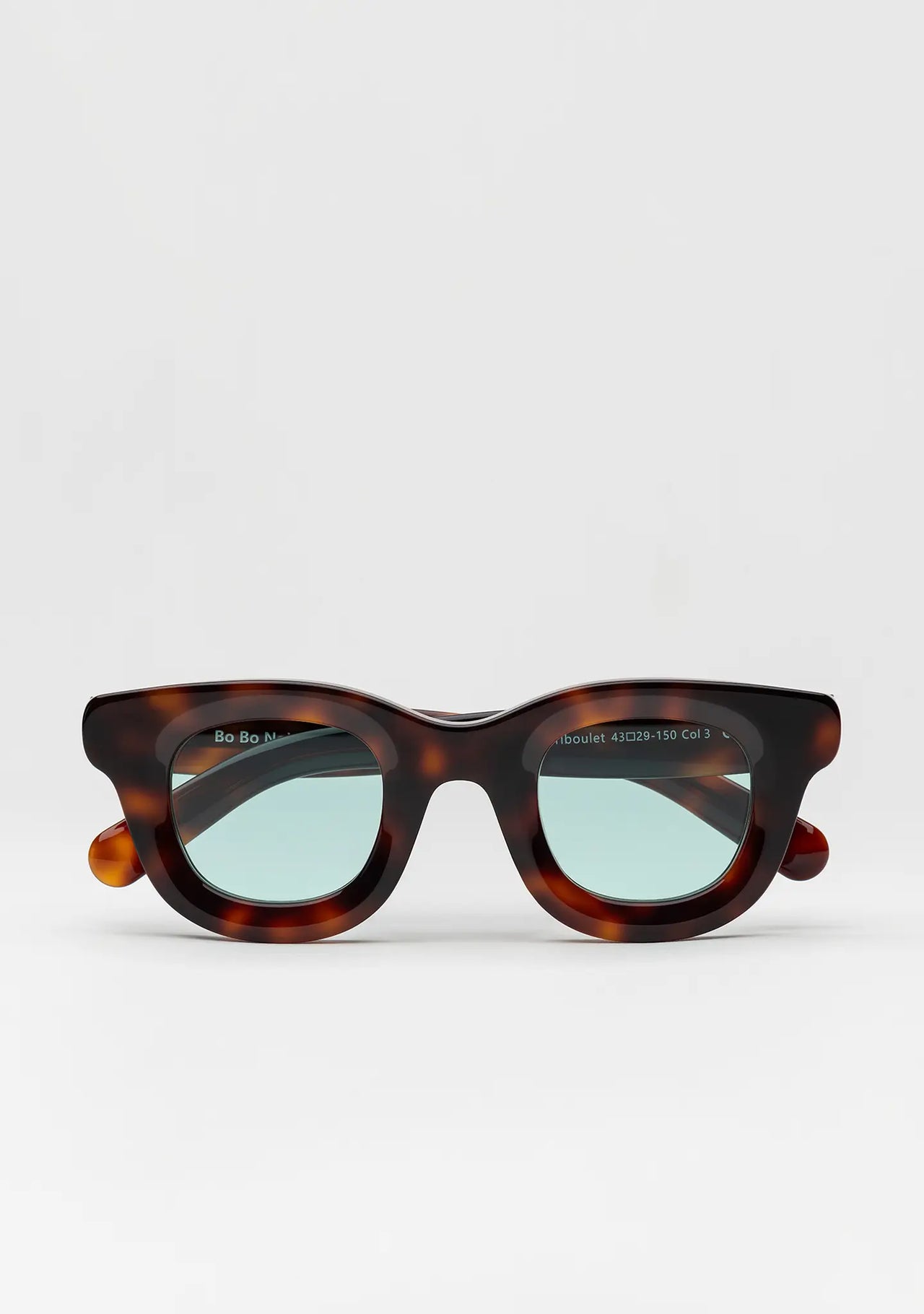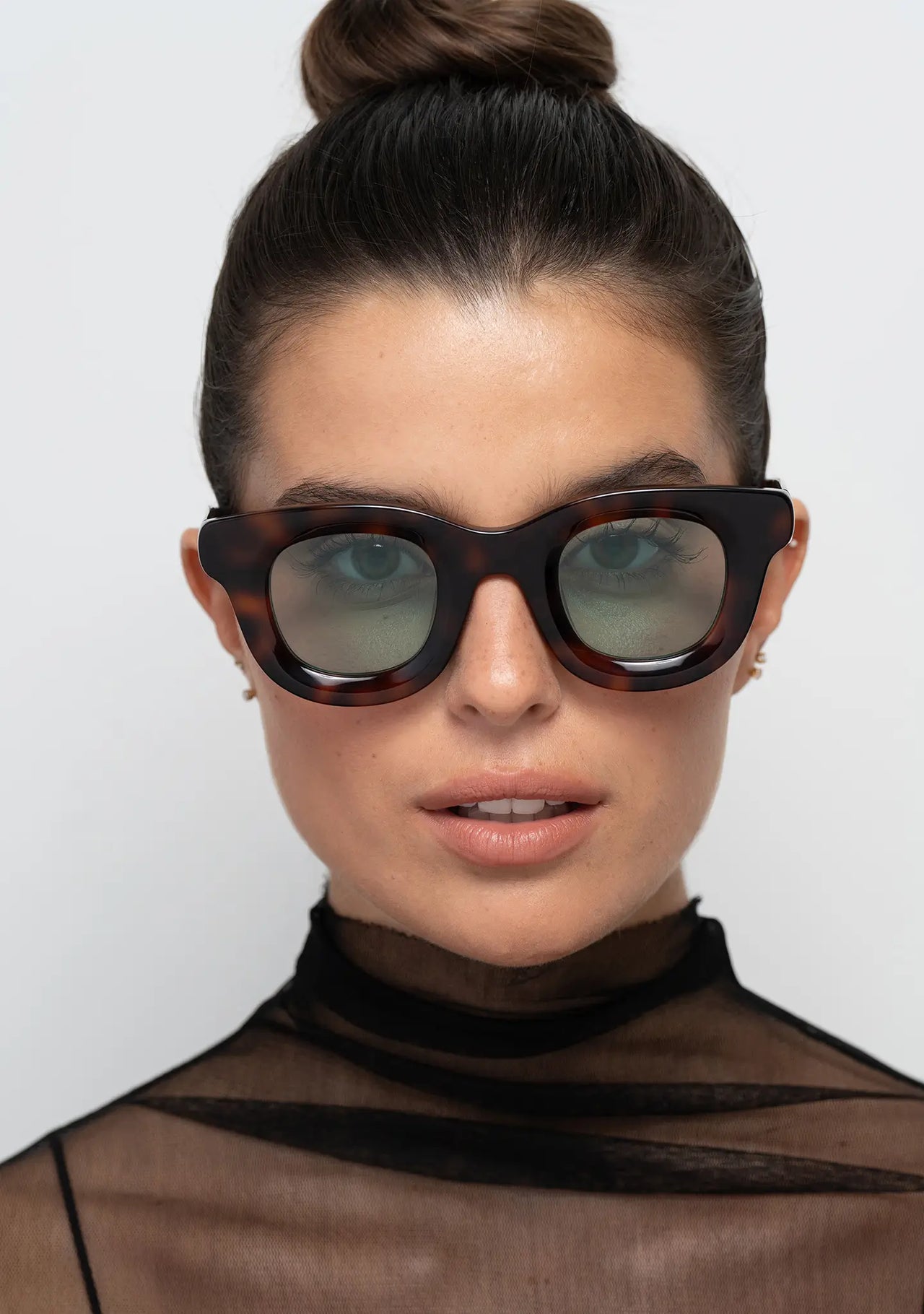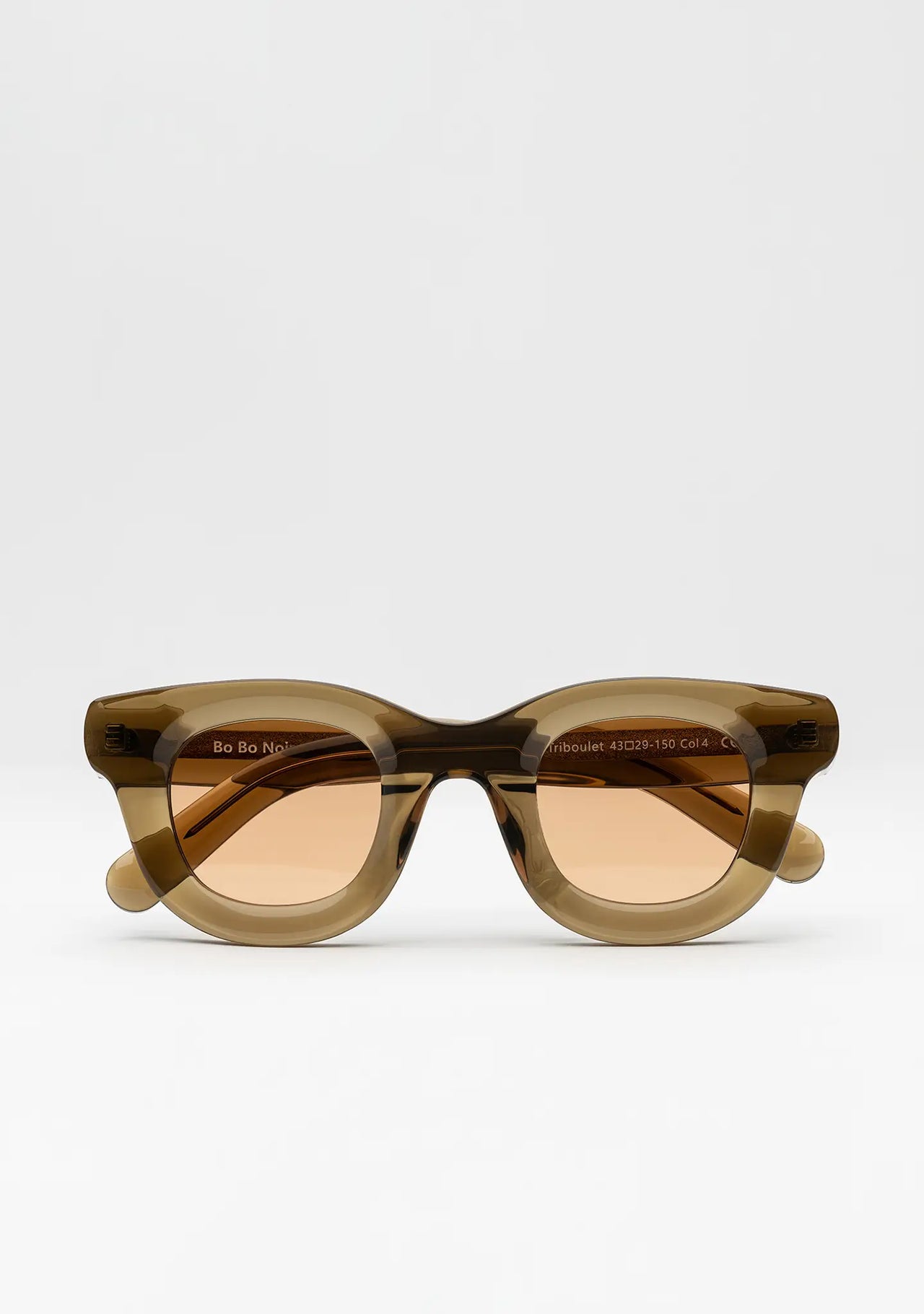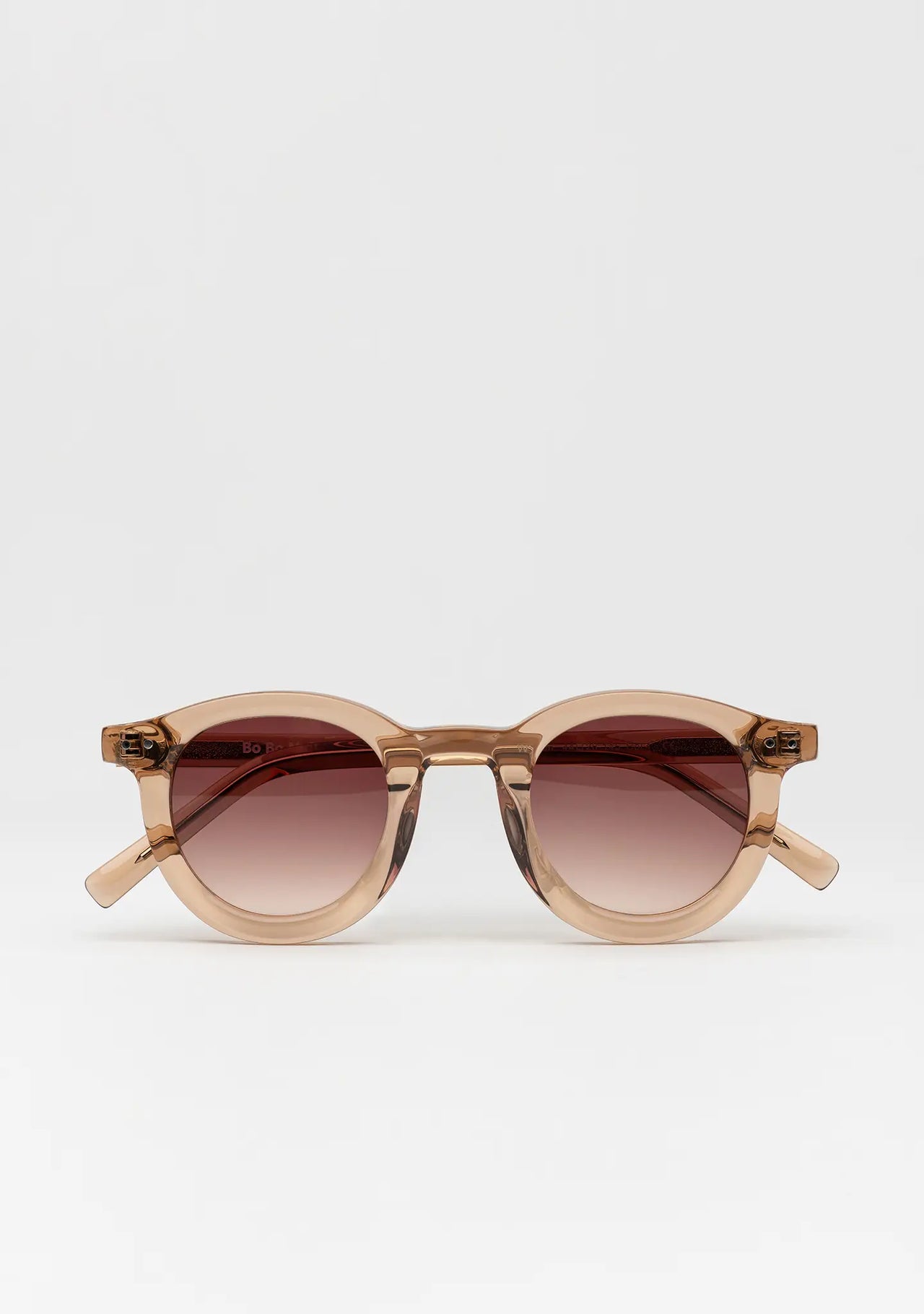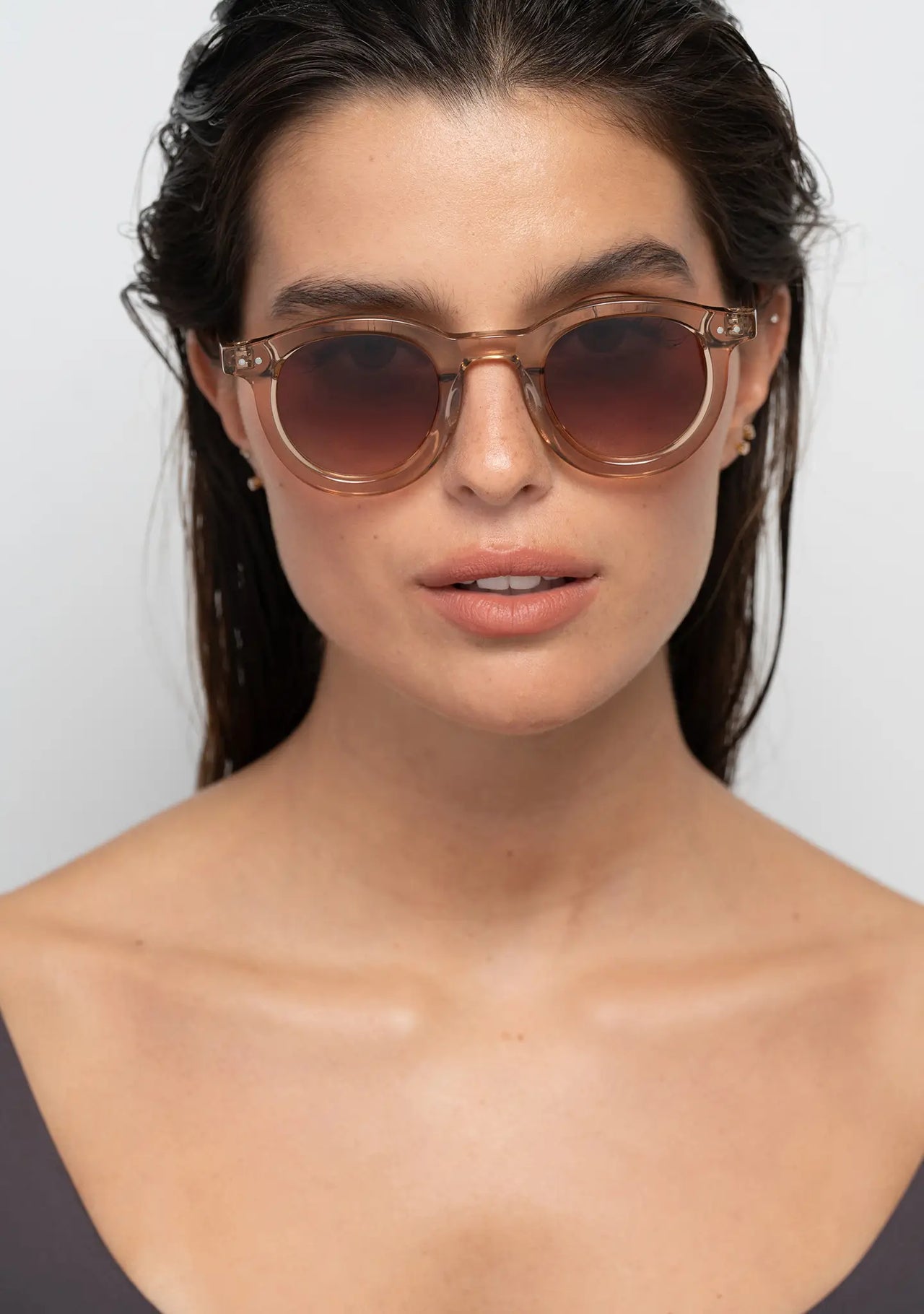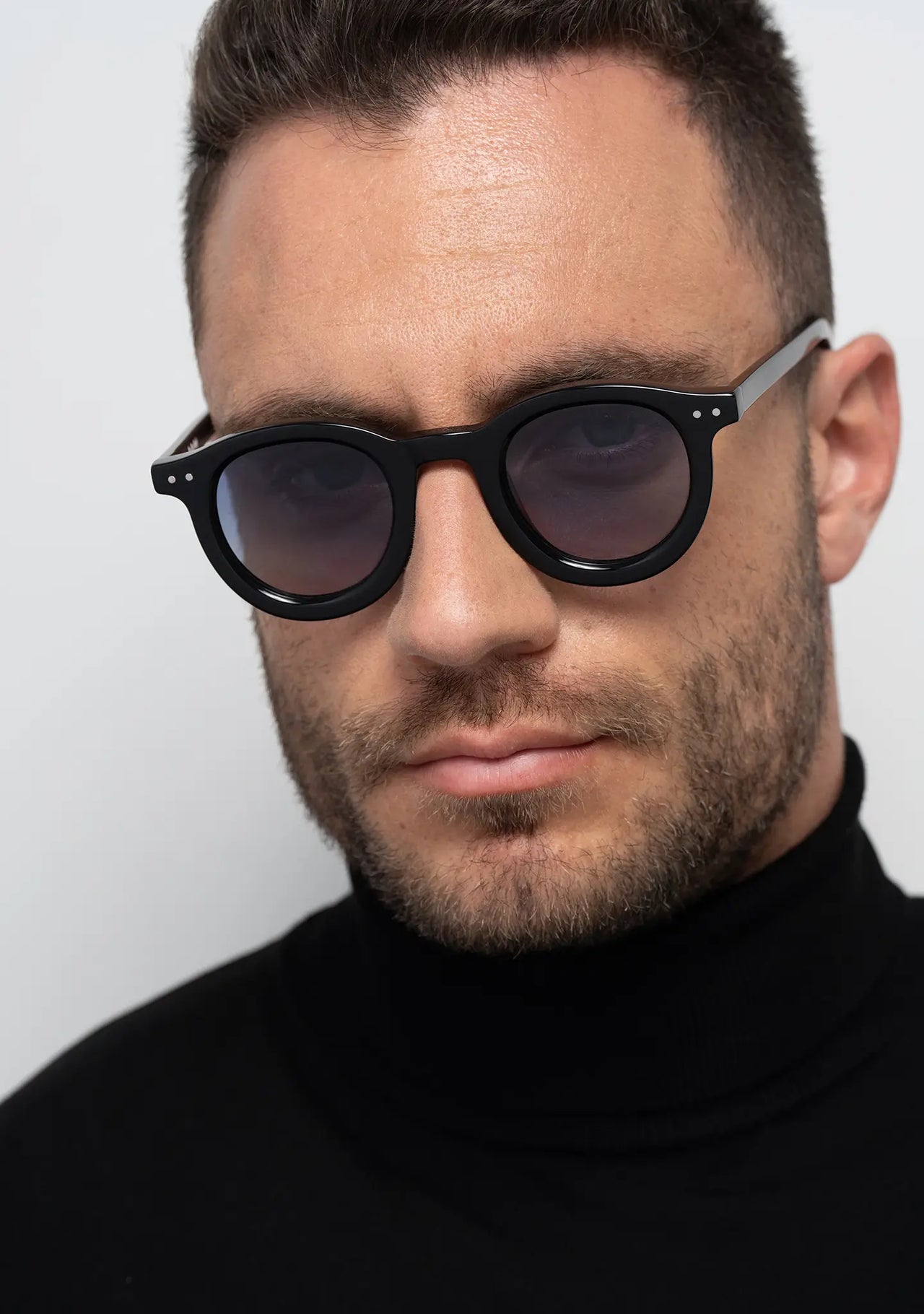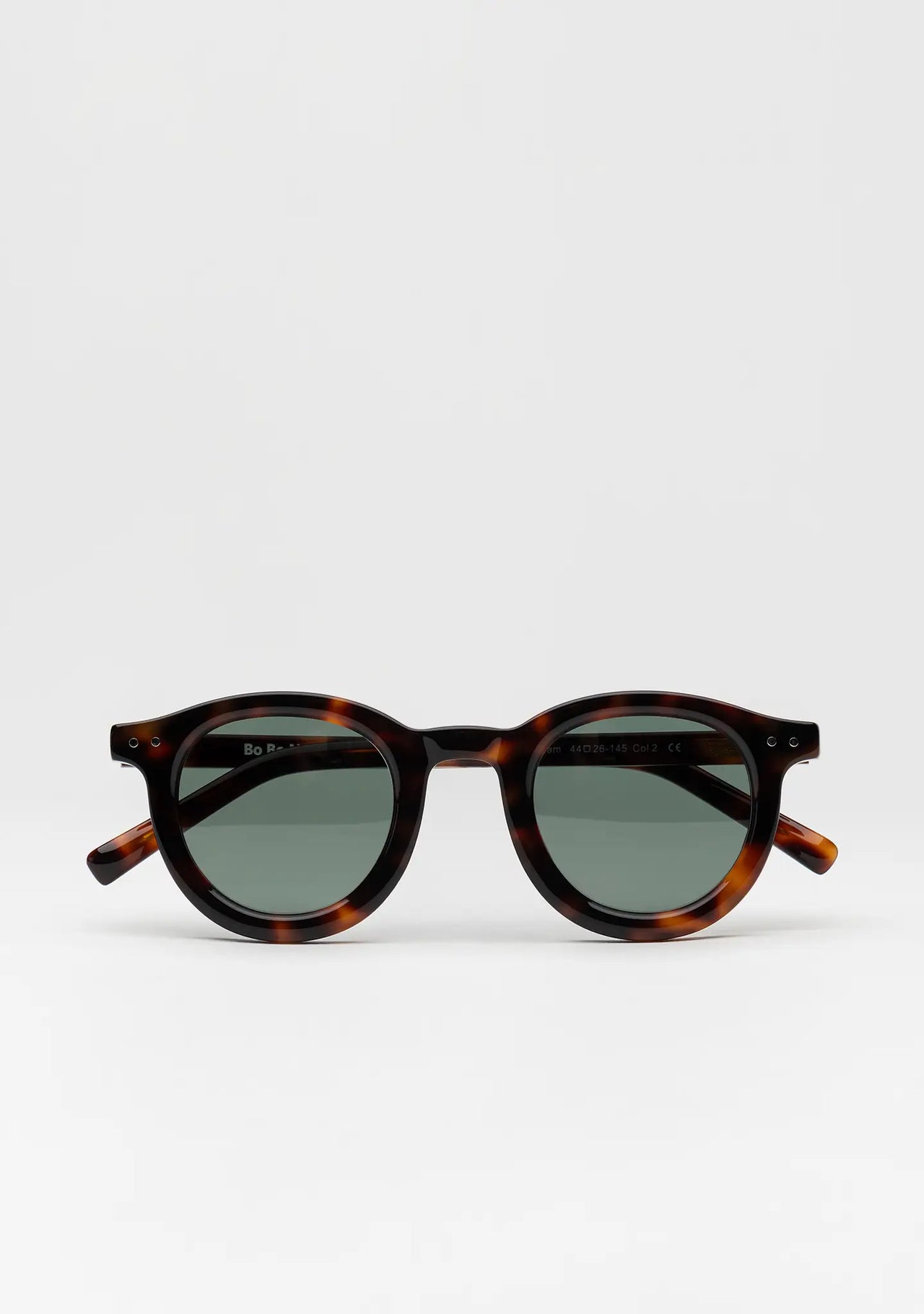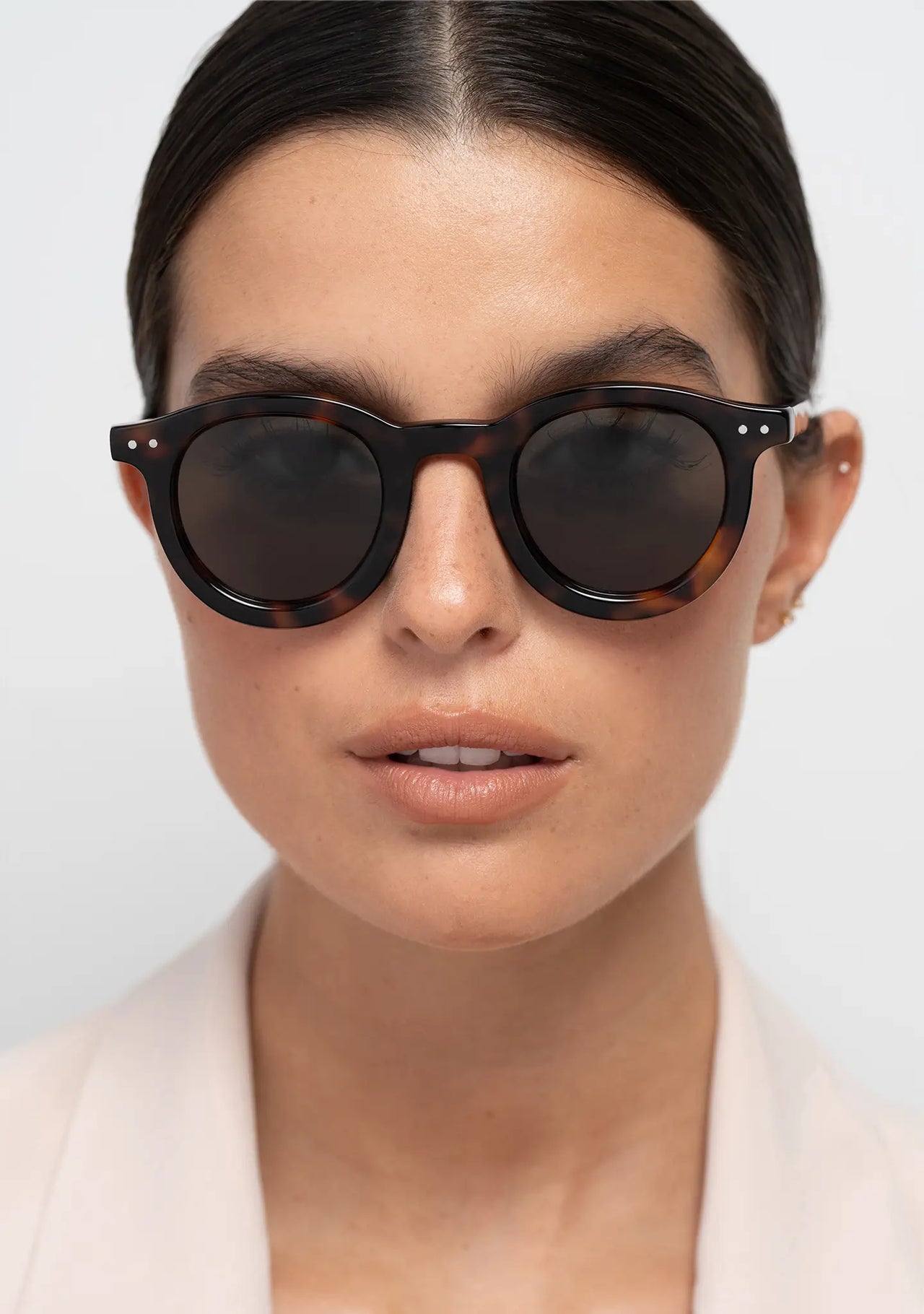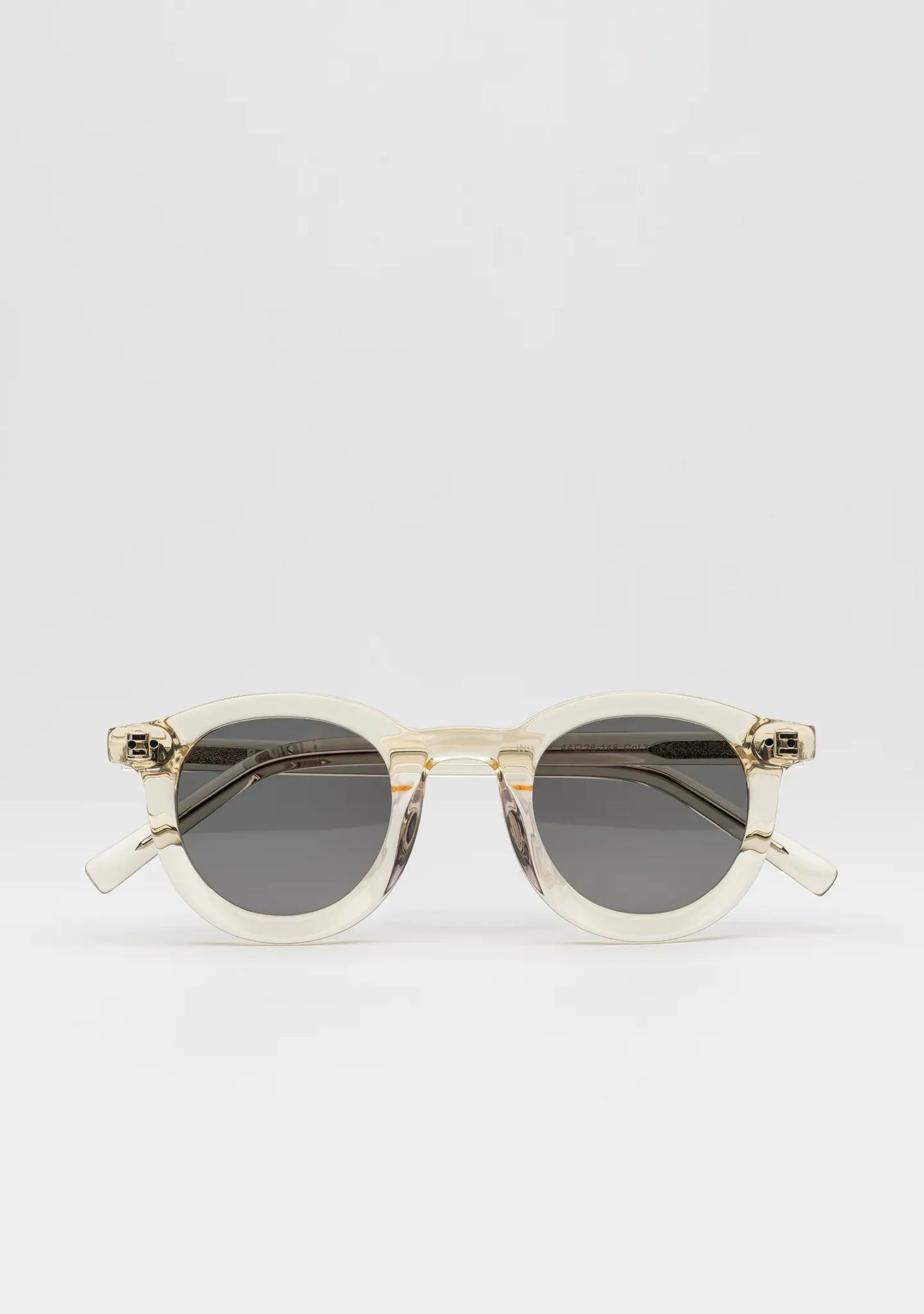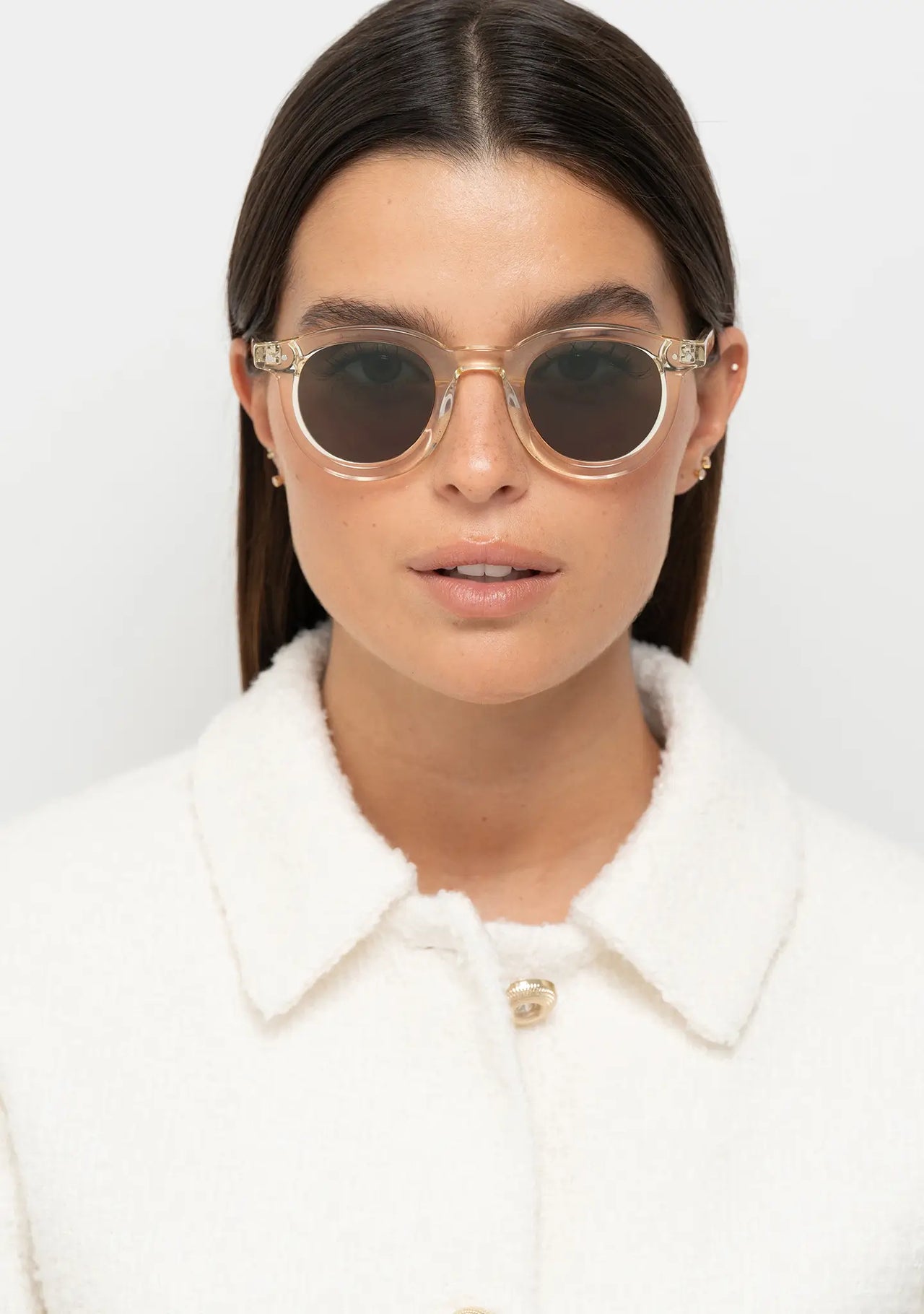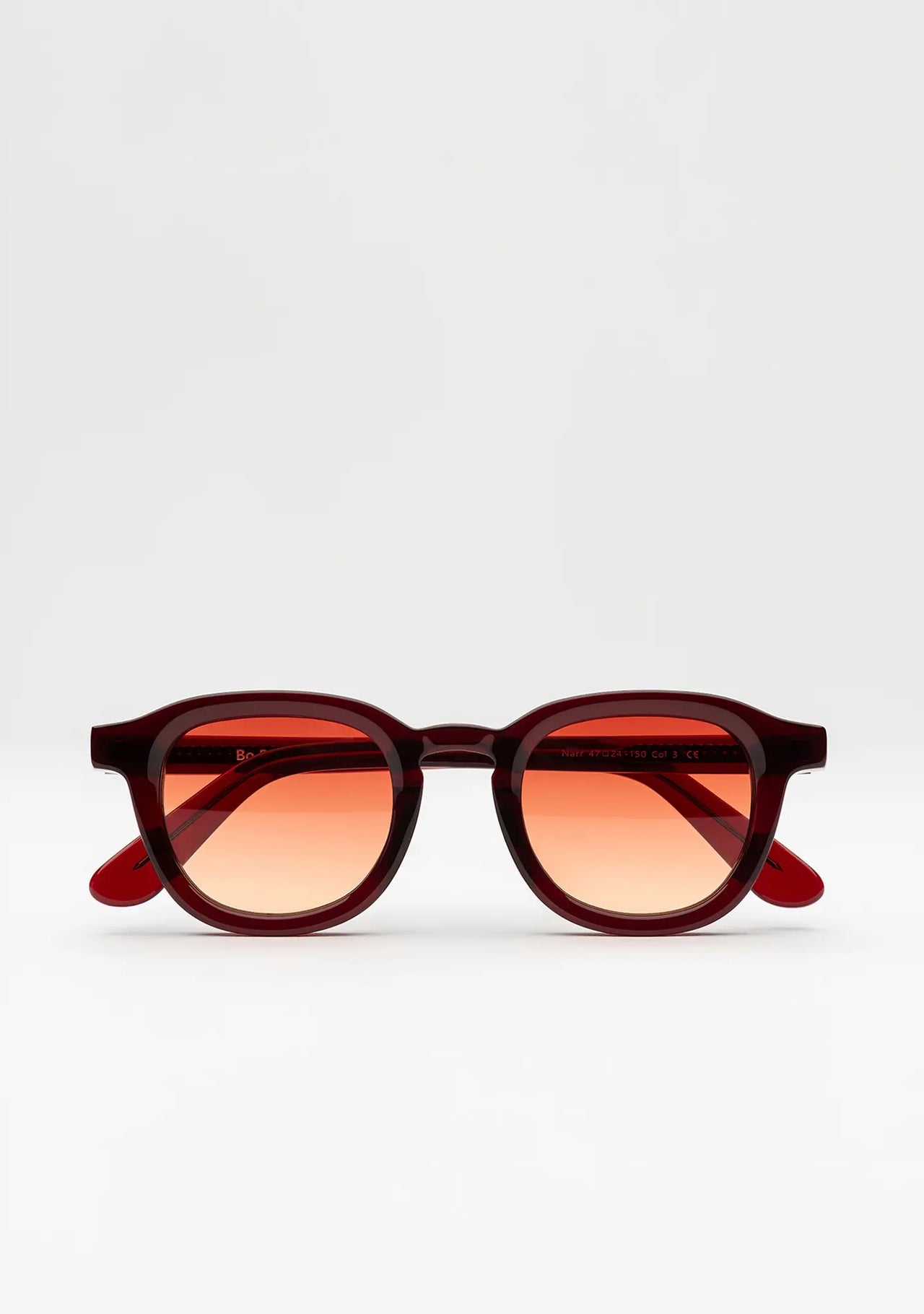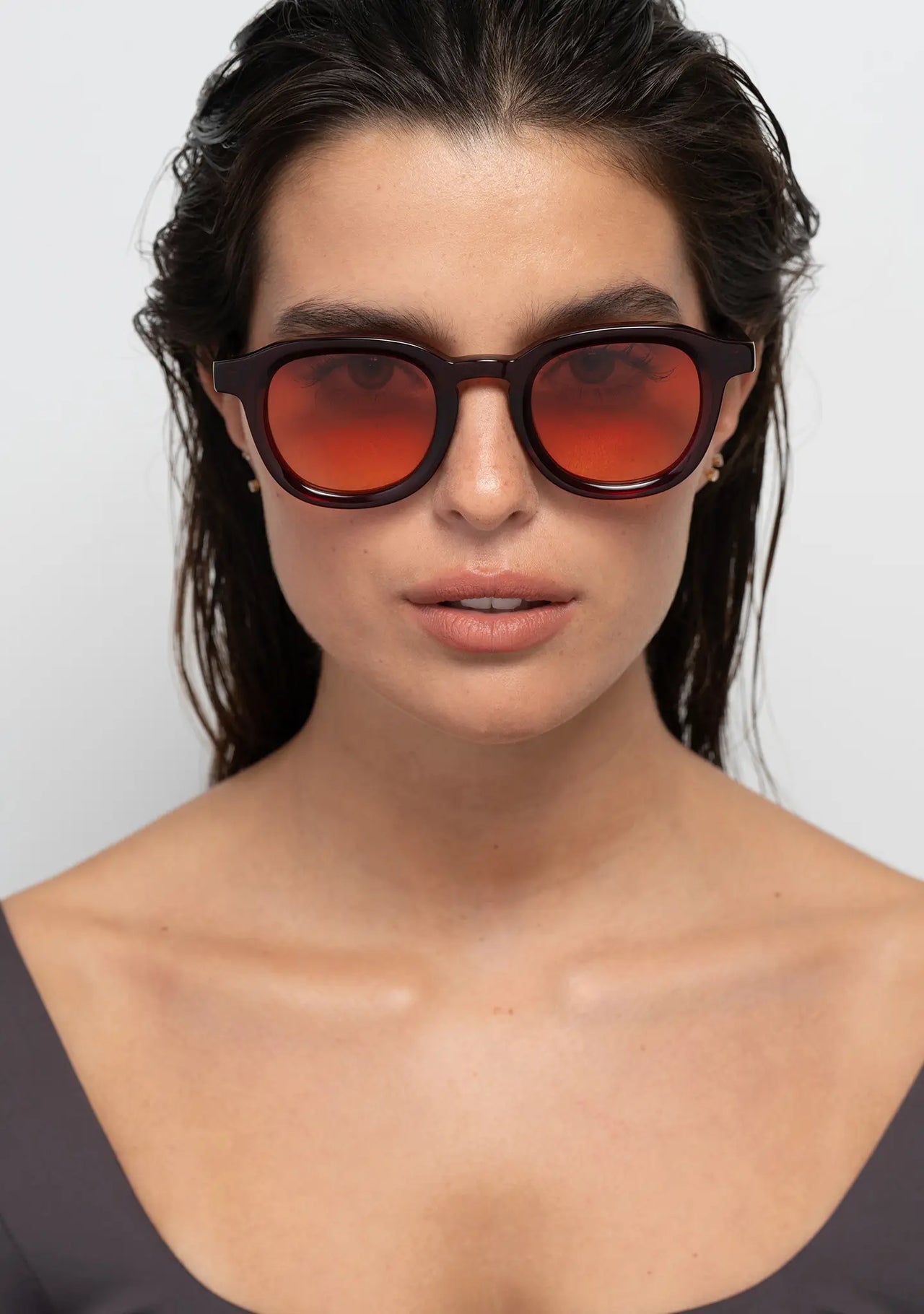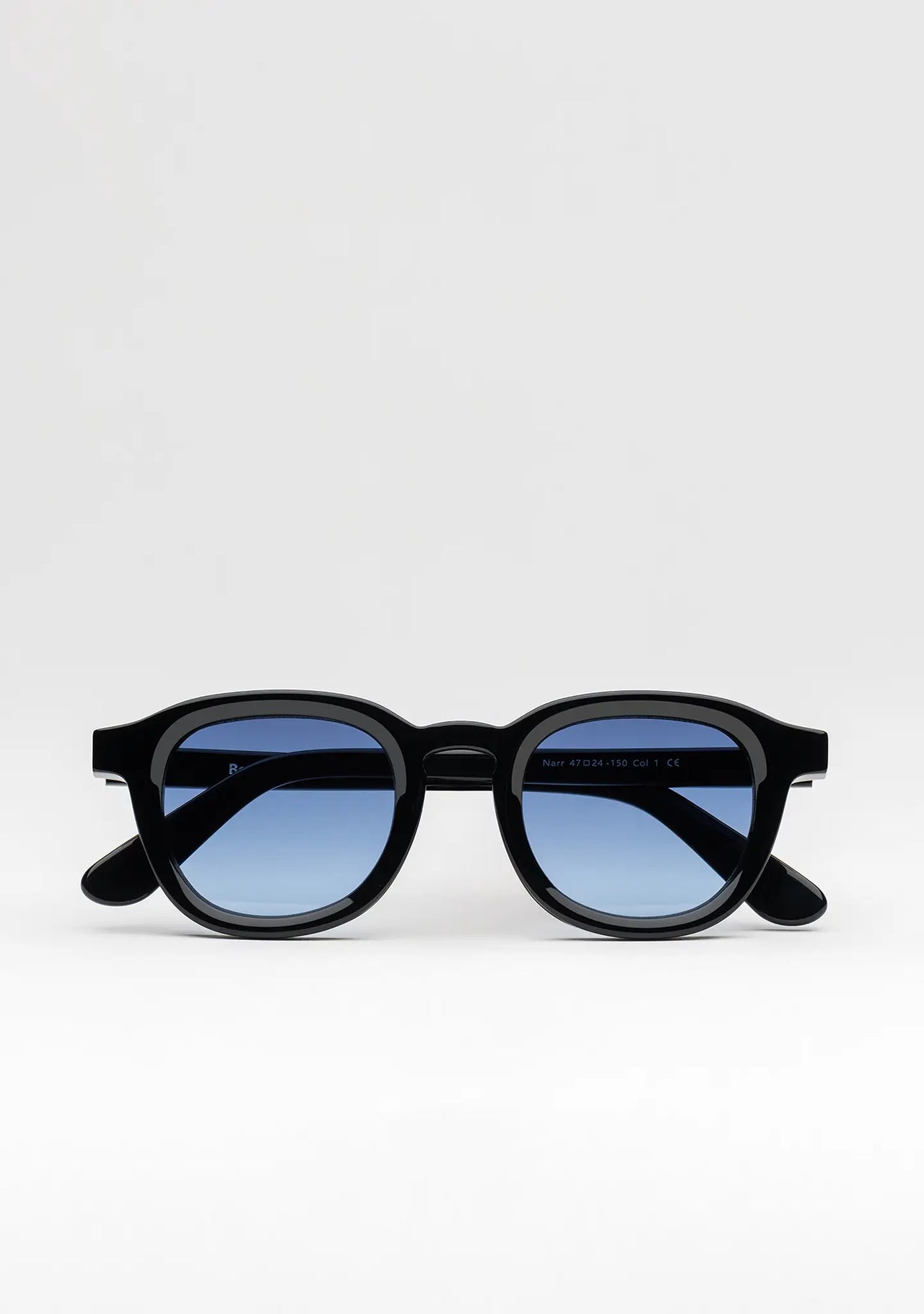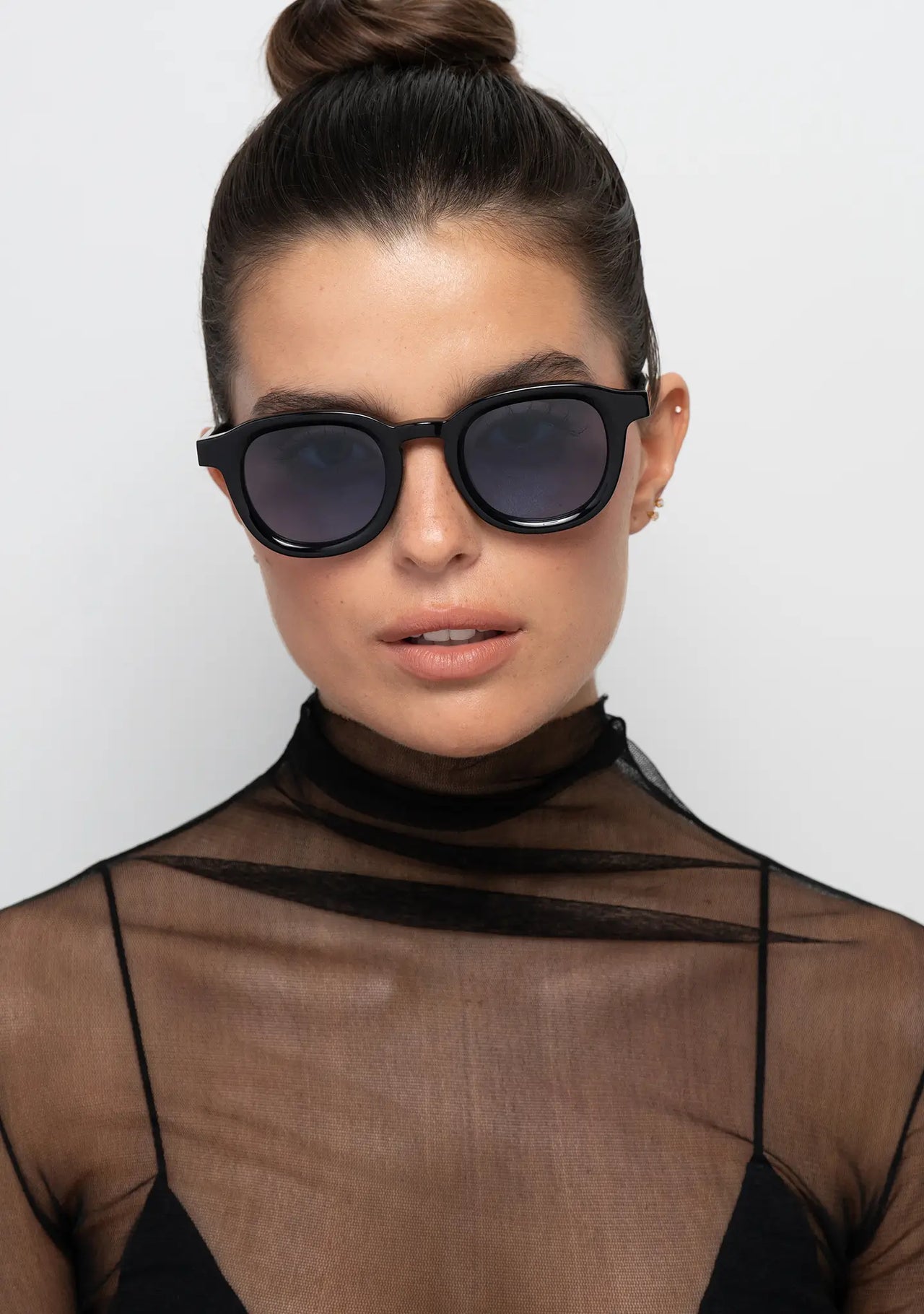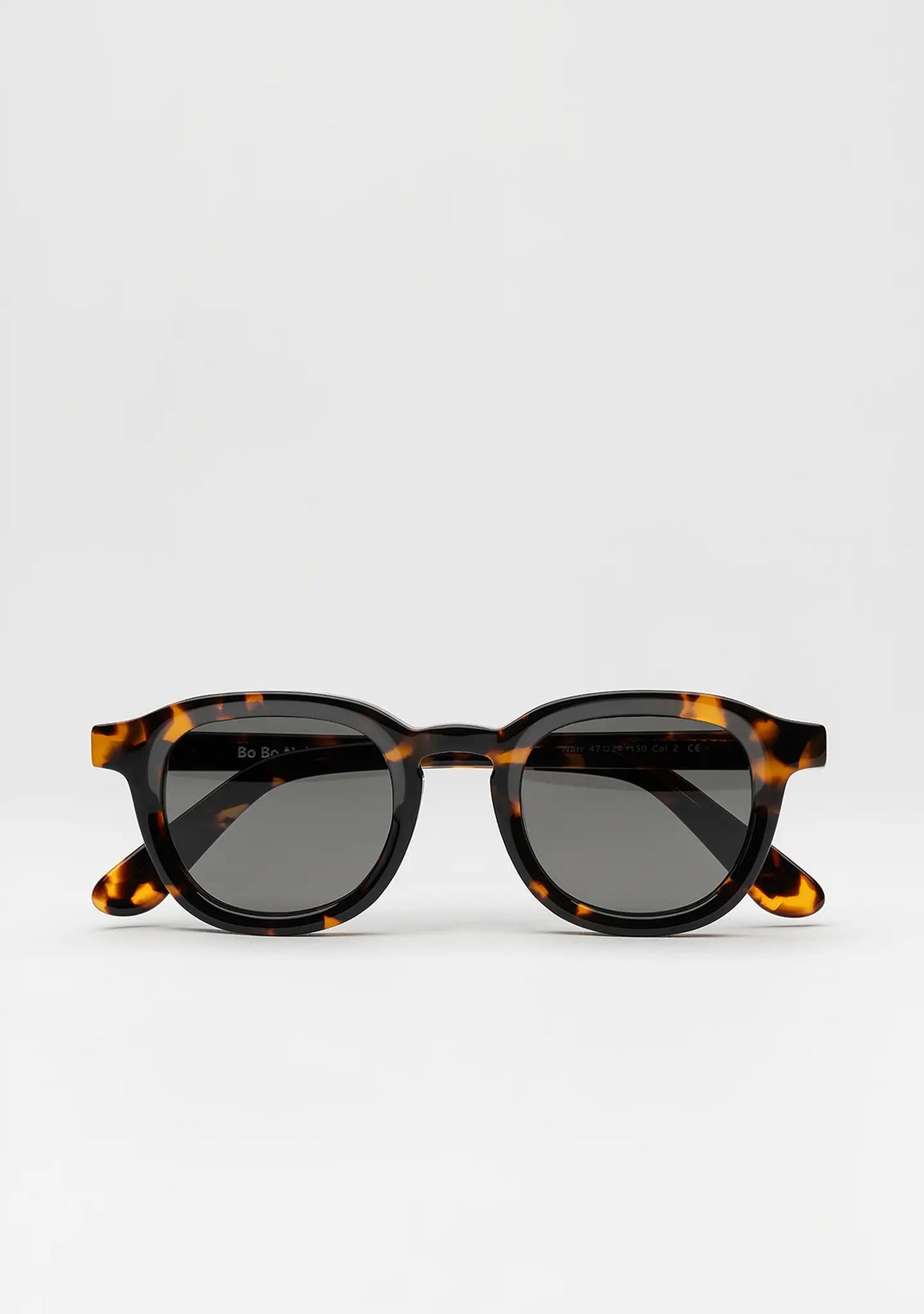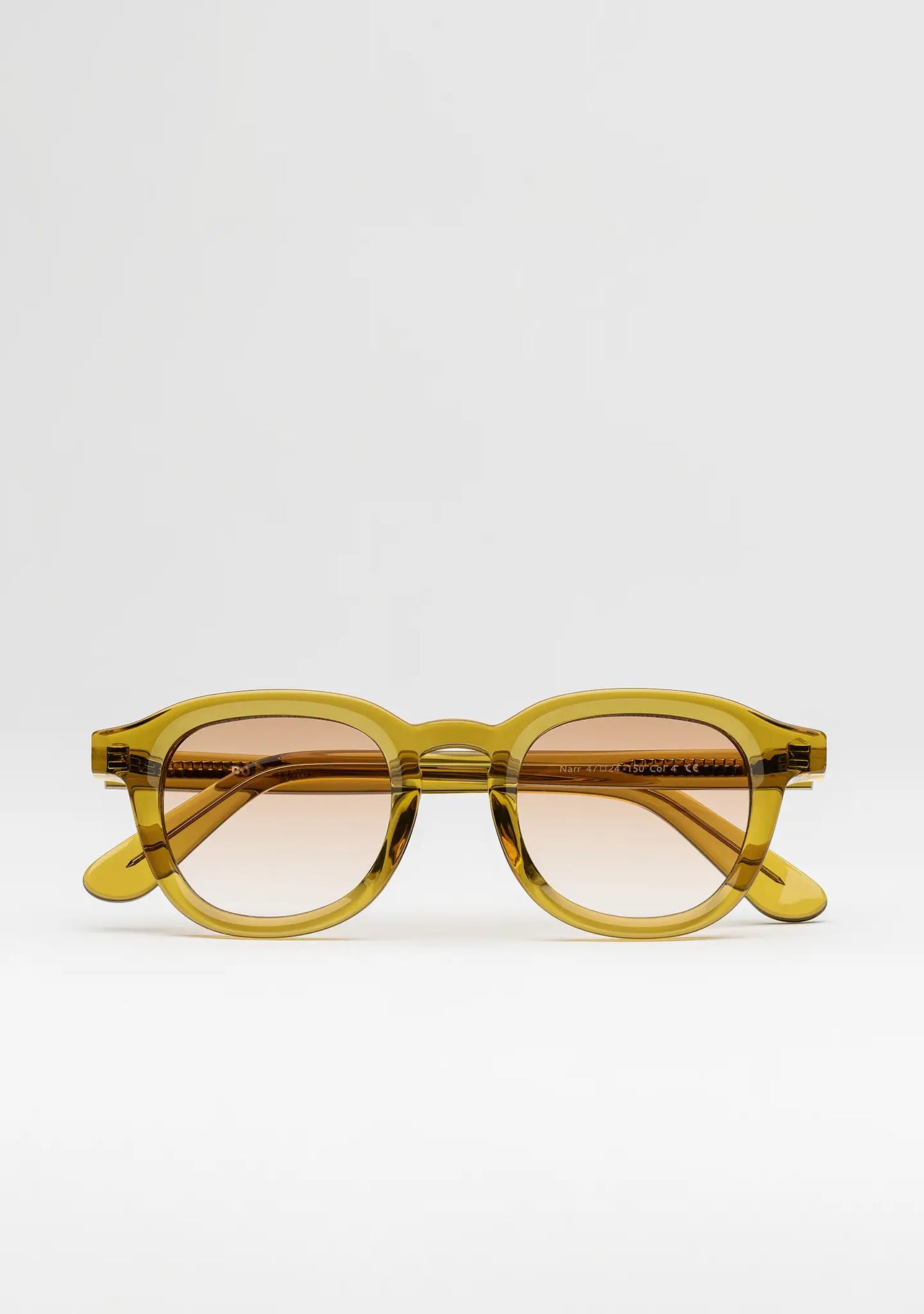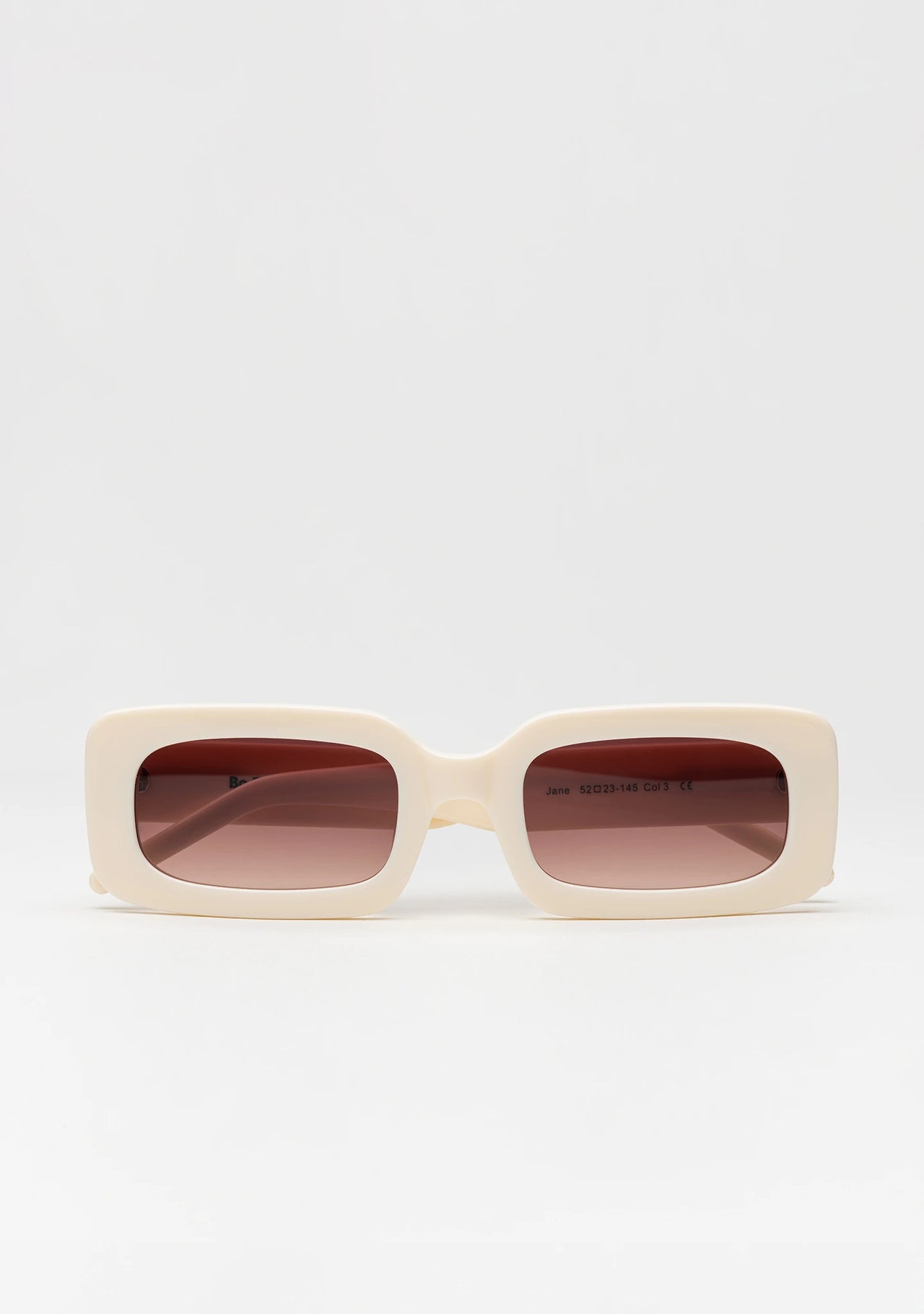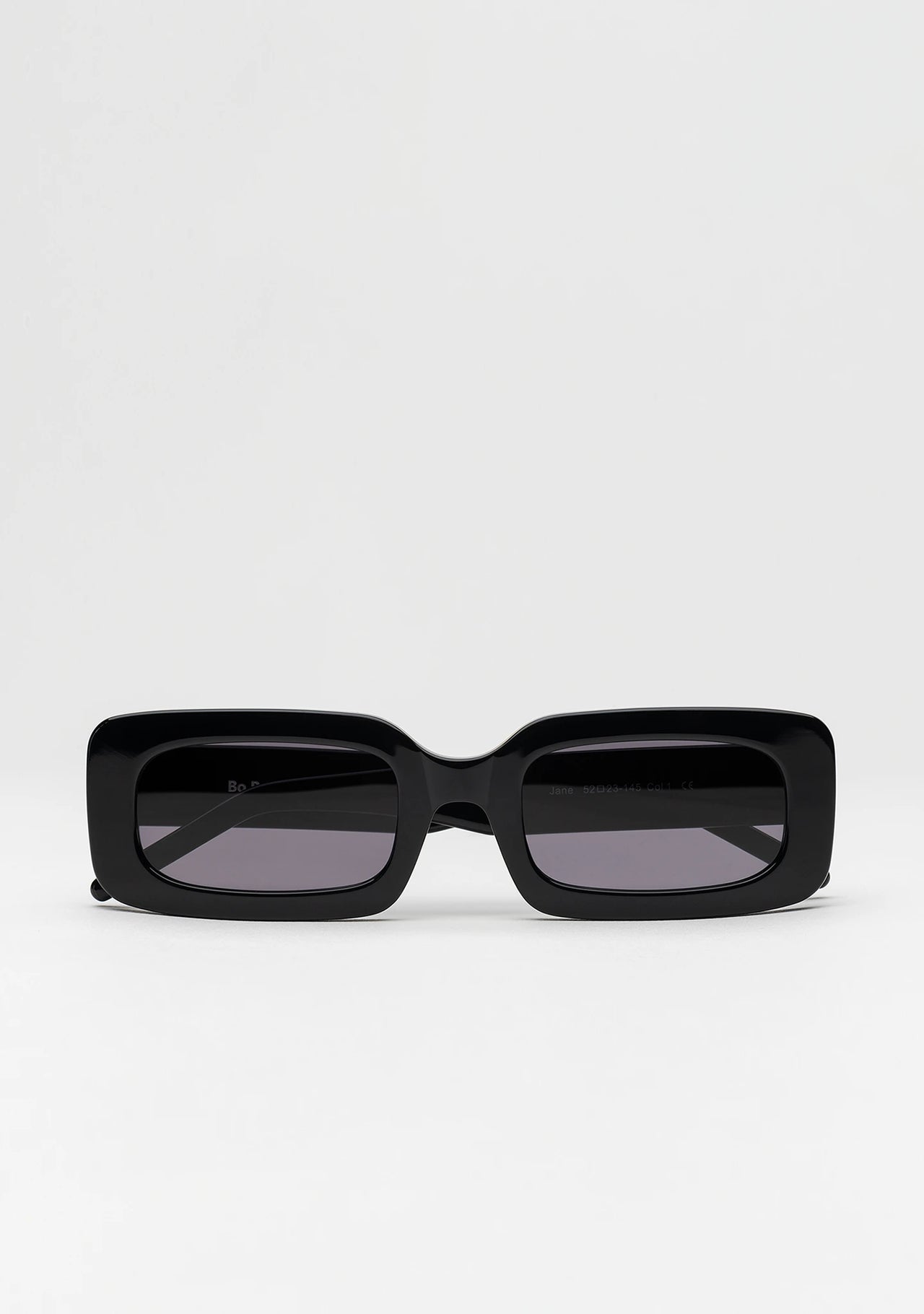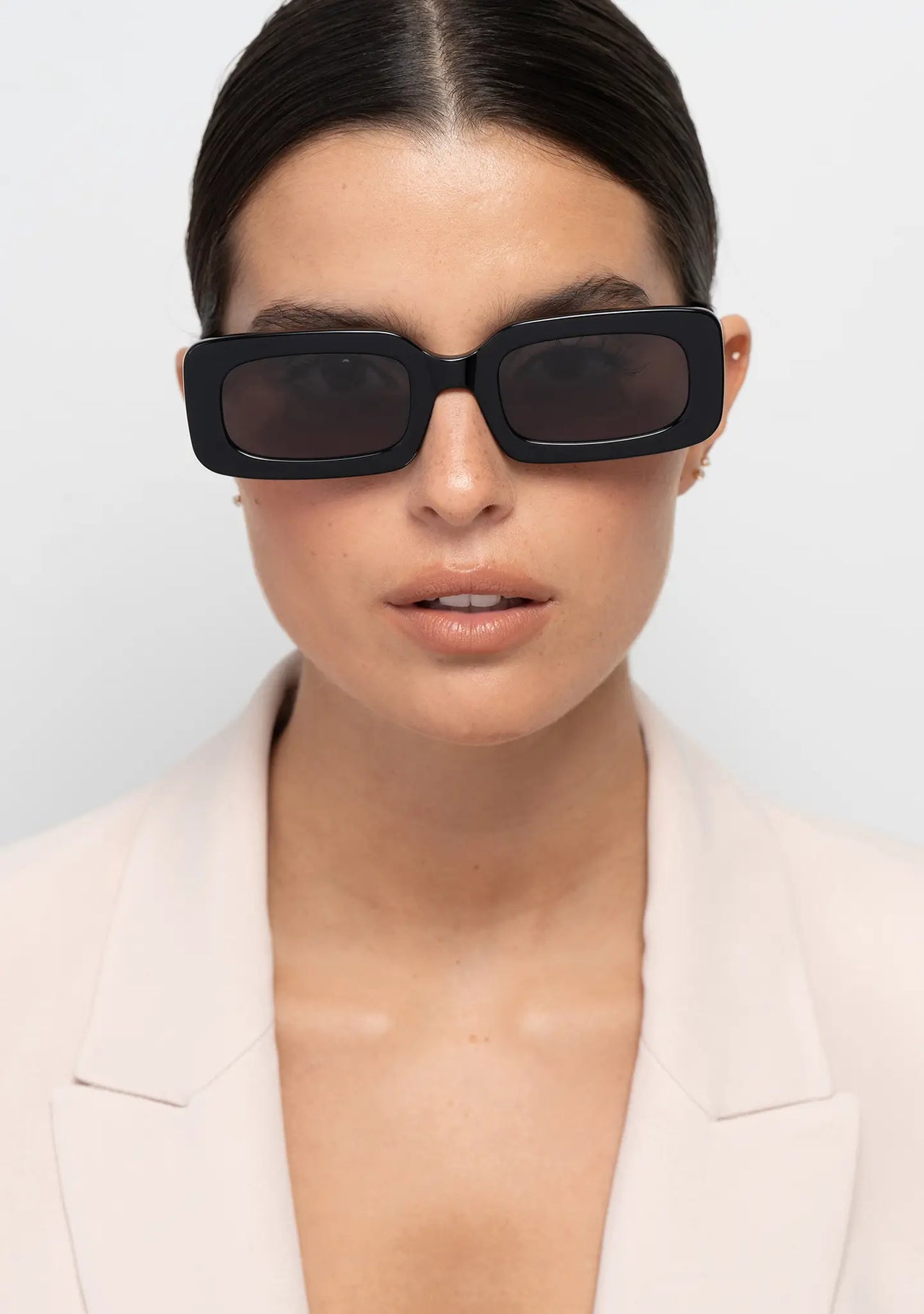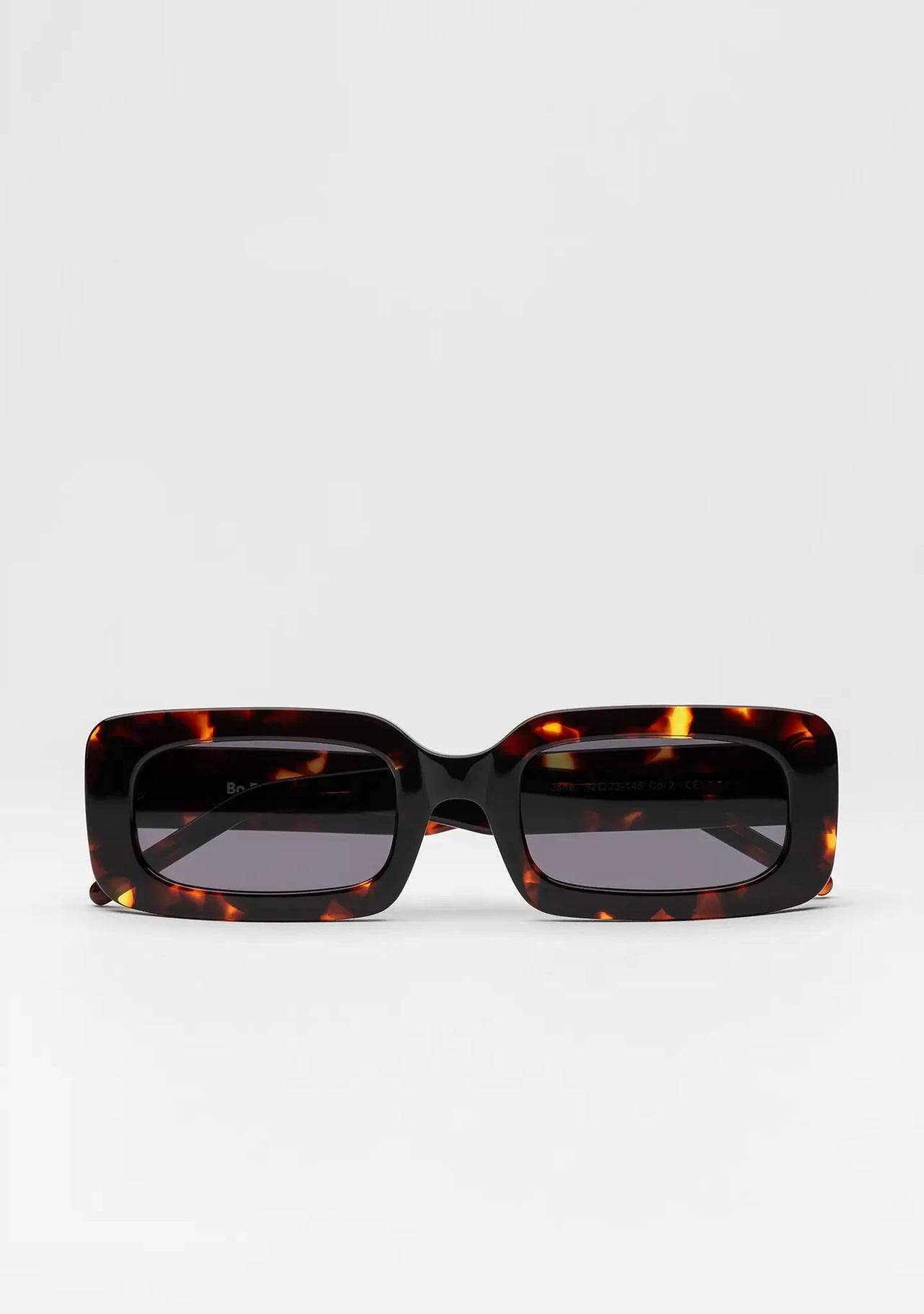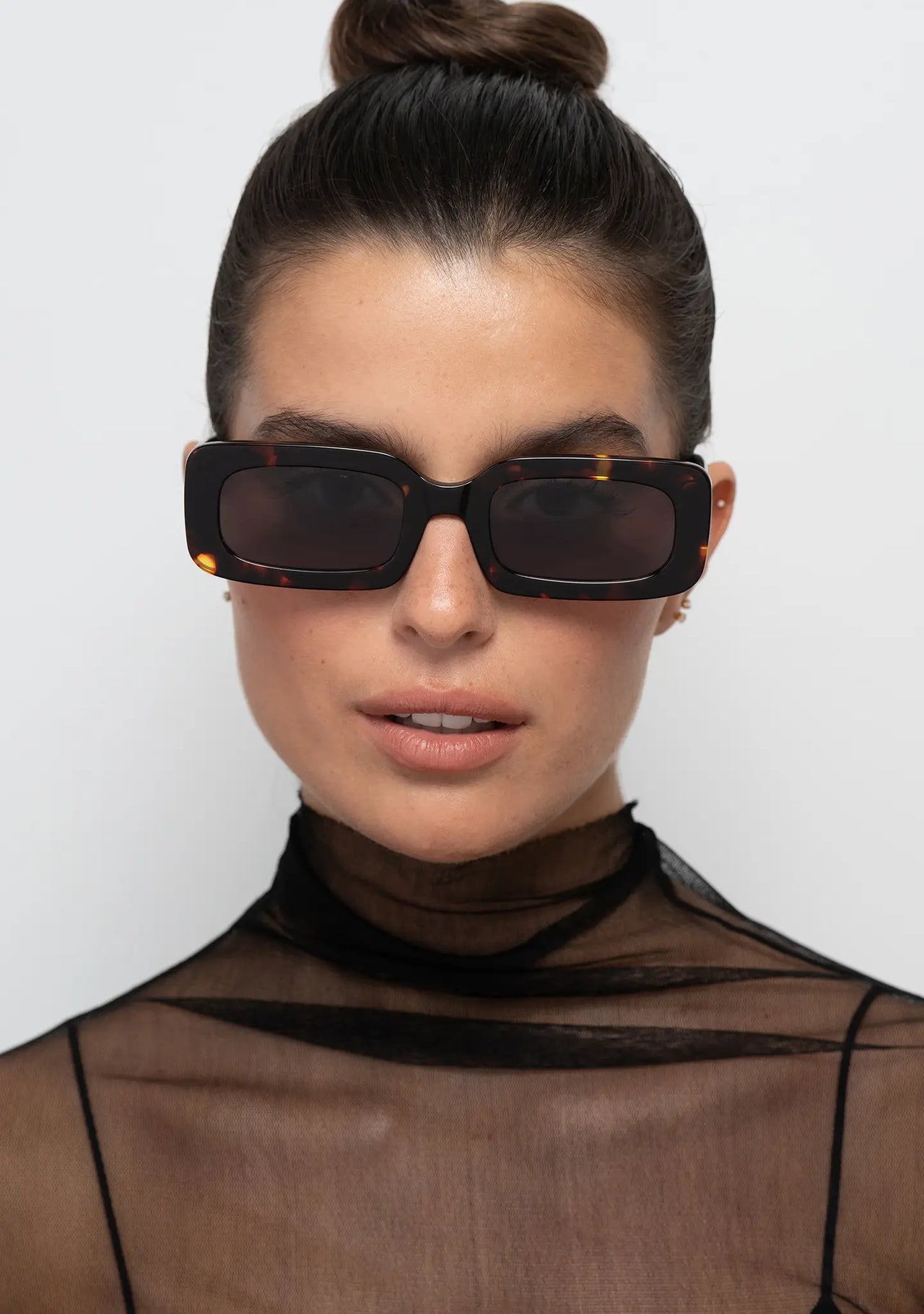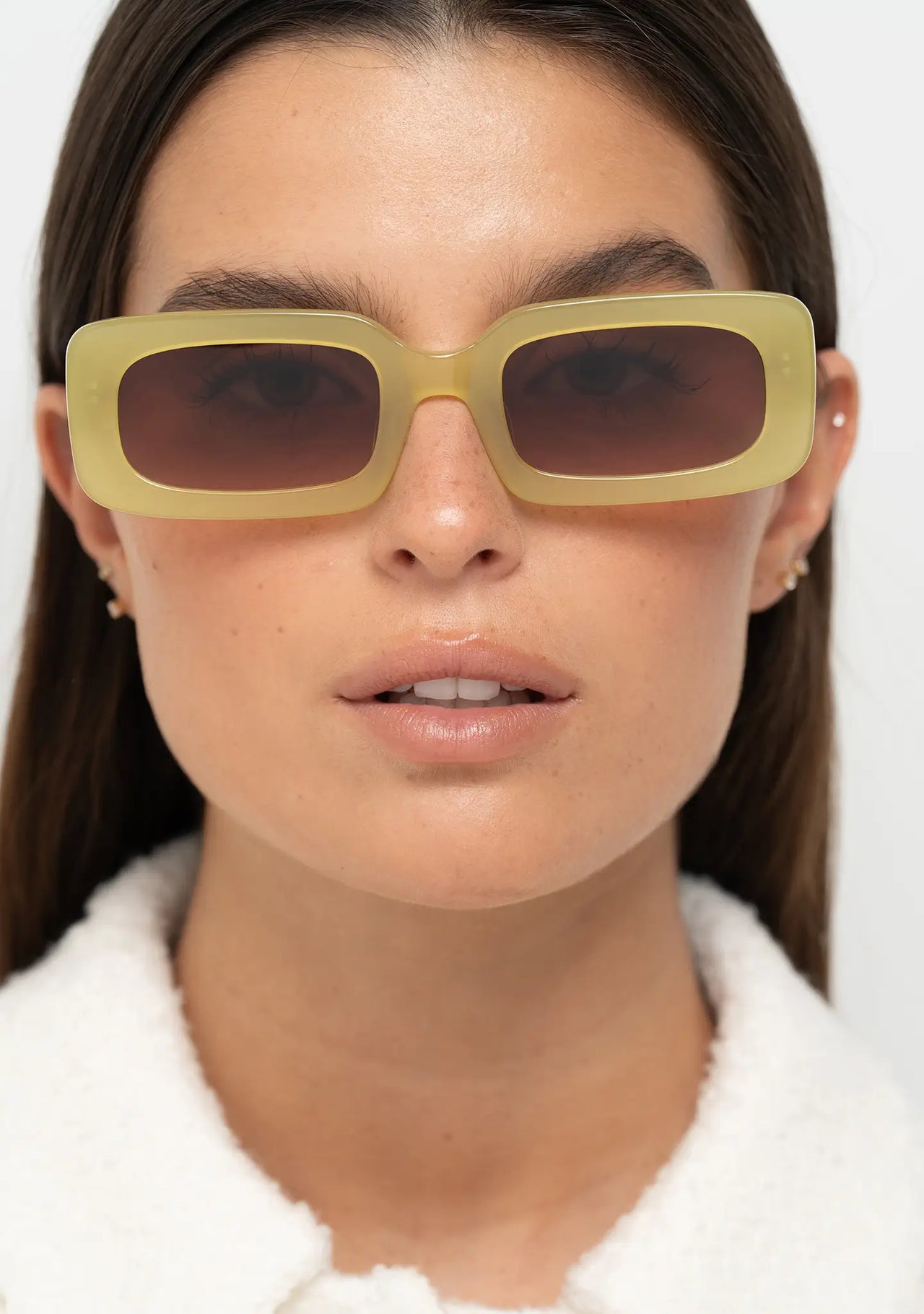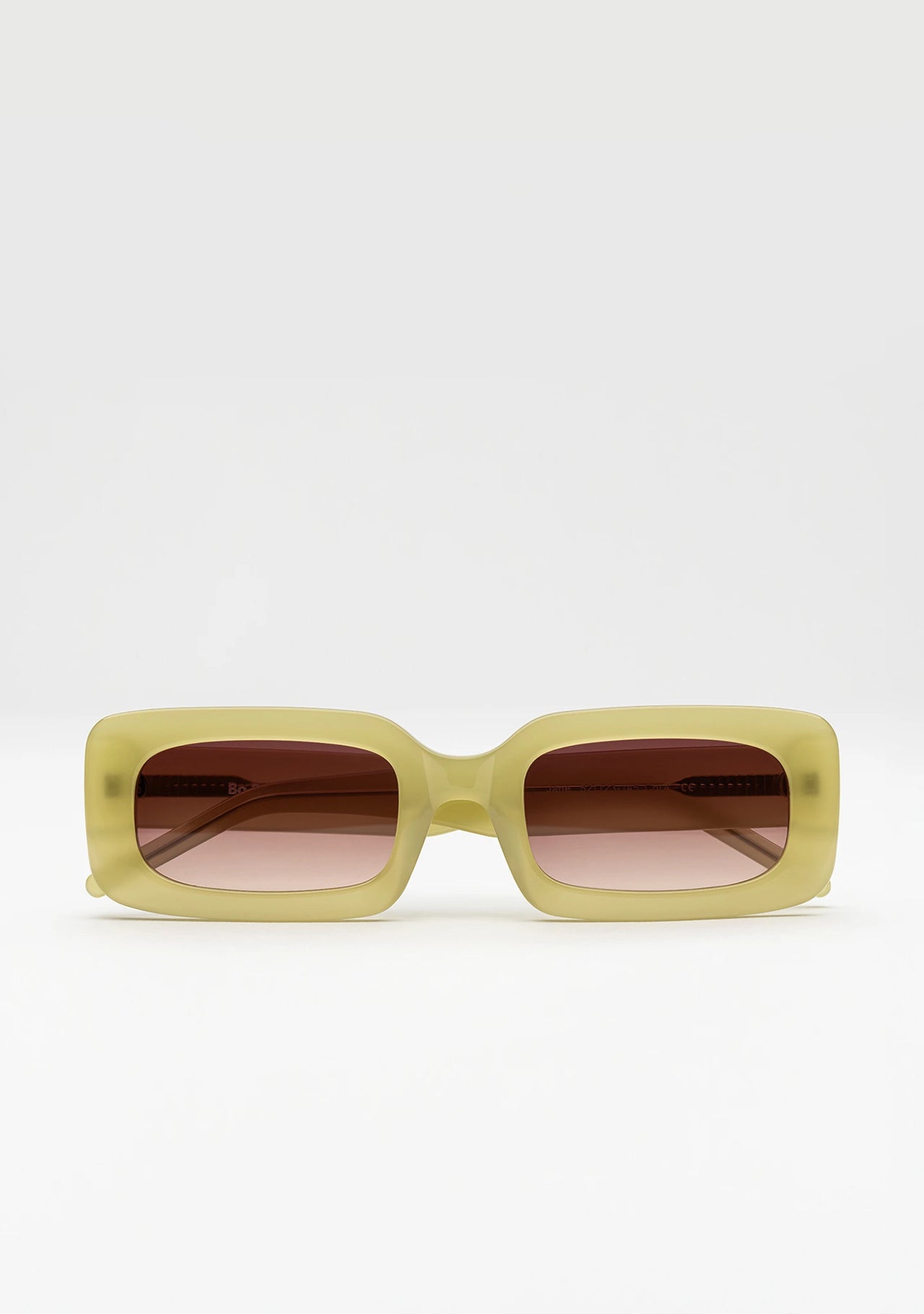Light defines how we see and how we feel. It sculpts surfaces, shifts tone, and turns silence into warmth. The William Sunglasses by Bo Bo Noir were created around that principle — adaptation. From mirrored glass in Lisbon’s avenues to the soft glare of Atlantic afternoons, they balance precision and ease, proving that true design adjusts without ever changing its character.
Designed for transition
Movement defines the modern day. You leave the interior glow of a café, step into sunlight, and need your vision to remain natural. The William was engineered for this continuity. Its CR-39 gradient lenses offer full UV400 protection while filtering brightness with calm precision. Shadows stay readable. Colors stay honest. Light stops being an interruption and becomes part of the rhythm.

Adaptation isn’t reaction — it’s anticipation. The William predicts the shifts between shade and exposure, between city reflection and coastal diffusion. Its geometry holds stability while the lenses translate light naturally. It doesn’t fight the environment; it aligns with it.
Urban clarity
In a city, light reflects from every surface — glass façades, water, concrete. The Shiny Black and Tortoise versions of the William handle this intensity with confidence. The deep tints absorb excess contrast, reducing glare without muting definition. Edges stay crisp. Texture remains visible. Architecture keeps its volume and depth. For long days between meetings, cafés, and travel, that kind of clarity becomes comfort.
Even under sharp reflections, the William maintains its balance. The bold round silhouette frames the face without hiding expression. It’s professional without stiffness, assertive without overstatement. The kind of precision that belongs equally in a boardroom window reflection or a café terrace glare.
Coastal calm
When light softens, the William shifts mood. Crystal Yellow brings warmth to the horizon, adding luminous contrast without heaviness. Crystal Peach translates glare into glow — gentle, golden, and calm. On the coast, where wind carries brightness in waves, these tints restore visual comfort and emotional ease. The frame remains stable, but perception becomes fluid.

Light as an element of design
Bo Bo Noir treats light as a design material, not just a condition. Every surface of the William — from lens curvature to acetate polish — is calculated to interact with illumination. Portuguese light is unique: intense yet diffused, direct yet forgiving. The William was born from that balance. Its proportions absorb and return brightness like architecture reflecting sun along stone.
In Lisbon, shadows have precision. Along the Algarve, brightness feels slower. The William carries both qualities. It behaves with the same composure in the mirrored tones of the city as it does in the open clarity of the coast. This is Portuguese design — structure that adapts not through change, but through understanding.
Engineering the feeling of ease
Adaptation depends on comfort. The William’s premium acetate frame balances density and weight, distributing pressure evenly across the face. The curved temples follow natural anatomy, and the bridge width prevents slip or fatigue. You don’t adjust it — it adjusts to you. That’s functional intelligence disguised as simplicity.
Every component has a purpose. The hinge resistance slows movement with quiet control. The lens depth shields without shadow. This is what makes the William less of an accessory and more of an interface between person and light — a subtle extension of vision.
Everyday adaptability
- Commute mornings — protects against low-angle glare without darkening indoor transitions.
- Office terrace breaks — maintains color neutrality while easing eye strain under mixed light.
- Weekend travel — balances brightness across climates, from stone alleys to sea reflections.

How the William interacts with color
Each colorway modifies not just what you see but how you feel:
- Shiny Black — clarity and contrast, a design that sharpens perception.
- Tortoise — layered warmth, ideal for shifting light and natural tones.
- Crystal Yellow — energy and optimism, a frame that glows in movement.
- Crystal Peach — calm and refinement, translating light into stillness.
These variations don’t divide the William into personalities — they expand its adaptability. Each tone filters brightness differently while keeping optical neutrality. It’s a study in how material color interacts with living light.
Portuguese design: discipline turned into elegance
Bo Bo Noir was founded on a Portuguese understanding of design — one that privileges proportion, restraint, and the relationship between form and atmosphere. Here, design is not theatrical. It’s measured, intelligent, and enduring. The William embodies that attitude: confident geometry, structural integrity, and light behavior resolved through quiet precision.
In Portugal, light defines architecture as much as space defines silence. The same philosophy shapes every Bo Bo Noir frame. The William was designed not to chase sunlight but to coexist with it — to make clarity feel effortless. That balance, rooted in discipline, becomes elegance.

Adaptability as identity
Some objects change with time. Others endure because they understand it. The William belongs to the second kind. Its proportions are not fixed trends but adaptable constants — round, balanced, human. You don’t replace this frame every season; you reinterpret it as light evolves. That’s the real measure of timelessness.
The sensory side of clarity
Vision is physical, but perception is emotional. The William filters brightness to reveal detail, but it also changes how you feel inside that light. The comfort of not squinting. The composure of a color that calms reflection on the skin. The subtle satisfaction of lenses that don’t distort the world but tune it.
That’s why Bo Bo Noir calls the William a frame of intention — it refines experience rather than decorating it. True adaptability happens when design disappears into function and leaves behind only ease.
Precision, not perfection
Adaptation is not about control. It’s about understanding boundaries. The William doesn’t chase flawless surfaces or exaggerated minimalism. It respects what light actually does. The small distortions, the warmth of shadow, the reflections that move across acetate — all these details form its truth. Precision, not perfection, defines its strength.

From movement to meaning
When an object adapts, it mirrors the human condition. The William responds to light the way we respond to change — calmly, intelligently, without losing identity. That’s what makes it more than a frame. It’s an attitude carried on the face: composed, aware, and unhurried.
From daylight to dusk
Gradient lenses give the William its signature rhythm. They shift naturally through brightness, creating continuity from day to evening. The tint never interrupts perception. Instead, it softens edges and deepens space. Whether you’re crossing a square at noon or walking the shore at sunset, vision stays balanced — always connected to atmosphere.
Decision through clarity
Design that adapts leaves no uncertainty. You see clearly; you feel aligned. That is why the William resonates with those who choose deliberately. Once you experience lenses that translate light with such calm intelligence, returning to distraction feels impossible. You stop looking for new frames — you start living inside one that understands you.
Make it yours
Explore the full Sunglasses Collection or view every tone and finish across frames in All Eyewear. Ready to see the William in each colorway. Discover William Shiny Black, William Tortoise, William Crystal Yellow and William Crystal Peach.


